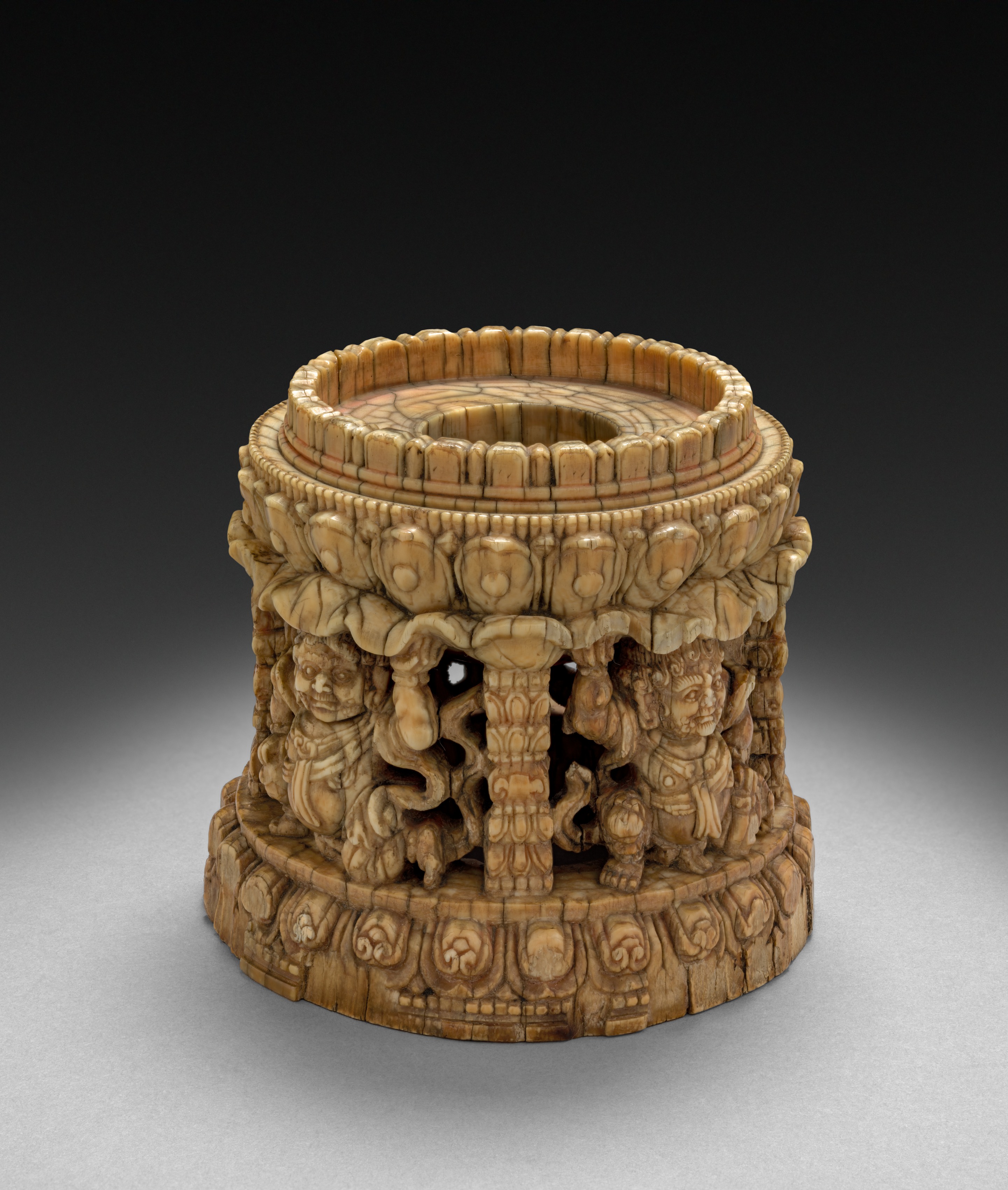The Cleveland Museum of Art
Collection Online as of April 20, 2024

Pedestal
mid-700s
(618-907)
Overall: 7.8 cm (3 1/16 in.); Diameter of base: 9 cm (3 9/16 in.)
Location: not on view
Description
Small circular pedestal or stand for an icon or figure, most probably a Buddha. Starting from the base of the pedestal, there is a band of pearling or beading, a row of everted lotus petals, four dwarf-like creatures alternating with four square columns, a lotus leaf, another row of lotus petals, their stamens and anthers, and finally a row of alternating large and small elements retaining traces of a red stain and probably representing stylized lotus petals. The pedestal is in the form of a well-known type, the double lotus pedestal (visvapadma), which was particularly popular in the second half of the sixth century, being found in most of the Chinese cave sites of that period. This pedestal however, represents a later continuation of the type.- (Christie's, London, England)?–1968Frederick M. Mayer [1899–1974], New York, NY, given to the Cleveland Museum of Art1968–The Cleveland Museum of Art, Cleveland, OH
- Oriental Ceramic Society, and British Museum. Chinese Ivories: From the Shang to the Qing: an Exhibition. [London]: The Society, 1984. cat. no. 11
- Chinese Ivories: from the Shang to the Qing. The British Museum, London, United Kingdom of Great Britain and Northern Ireland (May 24-August 19, 1984).Traditions and Revisions: Themes from the History of Sculpture. The Cleveland Museum of Art, Cleveland, OH (organizer) (September 24-November 16, 1975).Year in Review: 1968. The Cleveland Museum of Art, Cleveland, OH (organizer) (January 29-March 9, 1969).
- {{cite web|title=Pedestal|url=false|author=|year=mid-700s|access-date=20 April 2024|publisher=Cleveland Museum of Art}}
Source URL:
https://www.clevelandart.org/art/1968.70